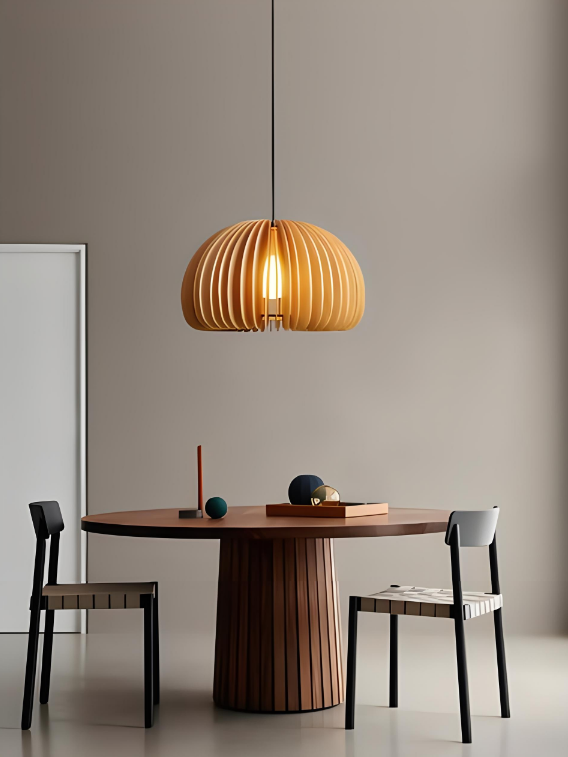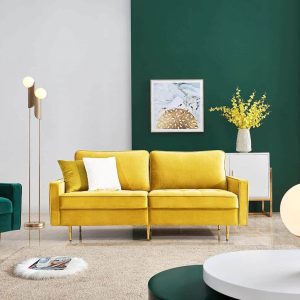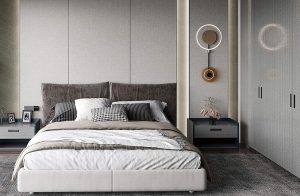Pendant lighting has been a staple in home decor for centuries. Its origins can be traced back to ancient civilizations, where they were used to illuminate homes and public spaces. The concept of hanging a light source from the ceiling has stood the test of time and continues to be a popular choice for homeowners today.
The history of pendant lighting dates back to the medieval period, where it was primarily used in castles and churches. These early pendant lights were often made of metal and featured intricate designs and details. As time went on, pendant lighting became more accessible to the general public and began to evolve in style and design.
Today, pendant lighting is still a popular choice for homeowners due to its timeless appeal and versatility. Whether you’re looking for a statement piece in your living room or a functional light source in your kitchen, pendant lighting can fit seamlessly into any home decor style.
Key Takeaways
- Pendant lighting is a timeless classic that adds style and elegance to any home decor.
- Pendant lighting is versatile and can be used in any room of the house, from the living room to the bedroom.
- Choosing the perfect pendant light for your home involves considering factors such as size, style, and placement.
- Installing pendant lighting is easy with a step-by-step guide, and it offers energy efficiency benefits.
- Mixing and matching pendant lights can create a cohesive look, and trending styles include industrial, modern, and traditional designs.
The Versatility of Pendant Lighting in Home Decor
One of the reasons why pendant lighting jayhull remains popular today is its versatility in home decor. It can be used in various rooms throughout the house, adding both functionality and style.
In the living room, pendant lighting can serve as a focal point and create a warm and inviting atmosphere. Whether you choose a large chandelier-style pendant or a cluster of smaller pendants, it can add a touch of elegance to the space. Pendant lighting can also be used to highlight specific areas, such as a reading nook or a coffee table.
In the kitchen, pendant lighting is often used over an island or dining table. It provides task lighting for food preparation and adds visual interest to the space. Pendant lights with adjustable heights are particularly useful in the kitchen, as they can be lowered for task lighting and raised for ambient lighting during meal times.
In the bedroom, pendant lighting can be used as bedside lamps or as statement pieces above the bed. It adds a touch of sophistication and creates a cozy and intimate atmosphere. Pendant lights with dimmer switches are ideal for the bedroom, as they allow you to adjust the lighting to suit your mood.
Choosing the Perfect Pendant Light for Your Home
When choosing a pendant light for your home, there are several factors to consider. First and foremost, you need to determine the purpose of the pendant light. Are you looking for task lighting, ambient lighting, or a combination of both? This will help you determine the type of pendant light you need.
Next, consider the size and scale of the pendant light. It should be proportionate to the size of the room and the furniture it will be placed above. A small pendant light may get lost in a large room, while a large pendant light may overwhelm a small space.
The style of the pendant light is also an important consideration. It should complement the overall aesthetic of your home decor. If you have a modern and minimalist style, a sleek and simple pendant light would be a good choice. On the other hand, if you have a more traditional or rustic style, a pendant light with ornate details and warm tones would be more fitting.
Pendant Lighting for Every Room: Living Room, Kitchen, Bedroom, and More
| Room | Pendant Lighting | Style | Size | Height |
|---|---|---|---|---|
| Living Room | 1 | Modern | Large | 24 inches |
| Kitchen | 3 | Industrial | Small | 12 inches |
| Bedroom | 2 | Traditional | Medium | 18 inches |
| Bathroom | 1 | Contemporary | Small | 10 inches |
Pendant lighting can enhance the ambiance of every room in your home. In the living room, it can create a cozy and inviting atmosphere. Whether you choose a large chandelier-style pendant or a cluster of smaller pendants, it will add a touch of elegance to the space.
In the kitchen, pendant lighting is often used over an island or dining table. It provides task lighting for food preparation and adds visual interest to the space. Pendant lights with adjustable heights are particularly useful in the kitchen, as they can be lowered for task lighting and raised for ambient lighting during meal times.
In the bedroom, pendant lighting can be used as bedside lamps or as statement pieces above the bed. It adds a touch of sophistication and creates a cozy and intimate atmosphere. Pendant lights with dimmer switches are ideal for the bedroom, as they allow you to adjust the lighting to suit your mood.
In the bathroom, pendant lighting can be used to create a spa-like atmosphere. It can be placed above the vanity or bathtub to provide task lighting and add a touch of luxury to the space. Pendant lights with frosted or tinted glass shades are popular choices for the bathroom, as they provide soft and diffused lighting.
How to Install Pendant Lighting: A Step-by-Step Guide
Installing pendant lighting may seem like a daunting task, but with the right tools and instructions, it can be a relatively simple process. Here is a step-by-step guide to help you install pendant lighting in your home:
1. Gather the necessary tools and materials. You will need a ladder, wire cutters, wire strippers, electrical tape, a screwdriver, and a voltage tester. You will also need the pendant light fixture itself, including any necessary mounting hardware.
2. Turn off the power to the area where you will be installing the pendant light. This can be done by flipping the corresponding circuit breaker in your electrical panel.
3. Remove any existing light fixtures or ceiling fans from the area where you will be installing the pendant light. This may involve unscrewing screws or disconnecting wires.
4. Install the mounting bracket for the pendant light fixture. This will typically involve screwing it into the ceiling using the provided screws.
5. Connect the wires from the pendant light fixture to the corresponding wires in your electrical box. This may involve stripping the ends of the wires and twisting them together, then securing them with wire nuts.
6. Attach the pendant light fixture to the mounting bracket using the provided screws or other hardware.
7. Turn on the power to the area where you installed the pendant light and test it to ensure it is working properly.
The Benefits of Pendant Lighting: Energy Efficiency and Style

Pendant lighting offers several benefits beyond its aesthetic appeal. One of the main advantages of pendant lighting is its energy efficiency. Compared to traditional ceiling lights, pendant lights use less energy and can help reduce your electricity bills. This is especially true if you choose LED pendant lights, which are known for their energy-saving properties.
In addition to being energy-efficient, pendant lighting can also add style and personality to your home decor. With a wide range of styles, shapes, and sizes available, you can find a pendant light that complements your existing decor or becomes a statement piece in its own right. Whether you prefer a sleek and modern design or a more traditional and ornate style, there is a pendant light out there for you.
Mixing and Matching Pendant Lights: Creating a Cohesive Look
Mixing and matching pendant lights can create a cohesive and visually interesting look in your home decor. By combining different styles, shapes, and sizes of pendant lights, you can add depth and dimension to a space.
When mixing and matching pendant lights, it’s important to consider the overall aesthetic of your home decor. Choose pendant lights that complement each other in terms of style, color, and material. For example, if you have a modern and minimalist style, you may want to mix different sizes of pendant lights in the same sleek and simple design.
Another way to create a cohesive look with pendant lights is to use them in different areas of the same room. For example, you could use a large chandelier-style pendant light as the focal point above a dining table, and then use smaller pendant lights with similar design elements as accent lighting in other areas of the room.
Trending Pendant Lighting Styles: Industrial, Modern, and Traditional
There are several trending styles of pendant lighting that can add a modern and stylish touch to your home decor. One popular style is industrial pendant lighting, which features raw and unfinished materials such as metal and exposed bulbs. Industrial pendant lights are often used in kitchens and dining areas to create a rustic and vintage-inspired look.
Modern pendant lighting is another popular choice, especially for homeowners with a contemporary or minimalist style. Modern pendant lights often feature sleek and clean lines, with minimal embellishments or details. They can be used in any room of the house to add a touch of sophistication and elegance.
For those who prefer a more traditional and classic look, traditional pendant lighting is a timeless choice. Traditional pendant lights often feature ornate details, such as crystal accents or intricate metalwork. They can be used in formal living rooms, dining rooms, or entryways to create a sense of grandeur and elegance.
Pendant Lighting for Small Spaces: Maximizing Light and Style
Pendant lighting can be particularly beneficial in small spaces, as it can help maximize both light and style. In small rooms or areas with low ceilings, pendant lights can provide much-needed overhead lighting without taking up valuable floor space.
When selecting pendant lighting for small spaces, it’s important to choose fixtures that are proportionate to the size of the room. Avoid oversized pendant lights that may overwhelm the space. Instead, opt for smaller pendant lights or those with adjustable heights that can be raised or lowered as needed.
To maximize the style impact of pendant lighting in small spaces, consider using multiple pendant lights in a cluster or row. This can create a visually interesting focal point and add depth to the space. Alternatively, you could choose pendant lights with unique shapes or designs that make a statement on their own.
Elevating Your Home Decor with Pendant Lighting
In conclusion, pendant lighting is a timeless classic that continues to be popular in home decor today. Its versatility, style options, and energy efficiency make it a practical and stylish choice for any room in your home. Whether you’re looking to create a cozy and inviting atmosphere in your living room or add a touch of elegance to your kitchen, pendant lighting can elevate your home decor and make a statement. So why not give pendant lighting a try and see how it can transform your space?


